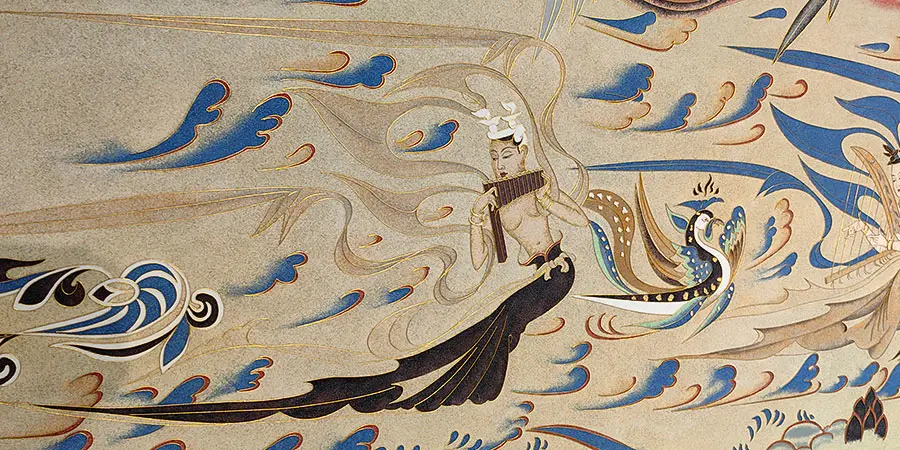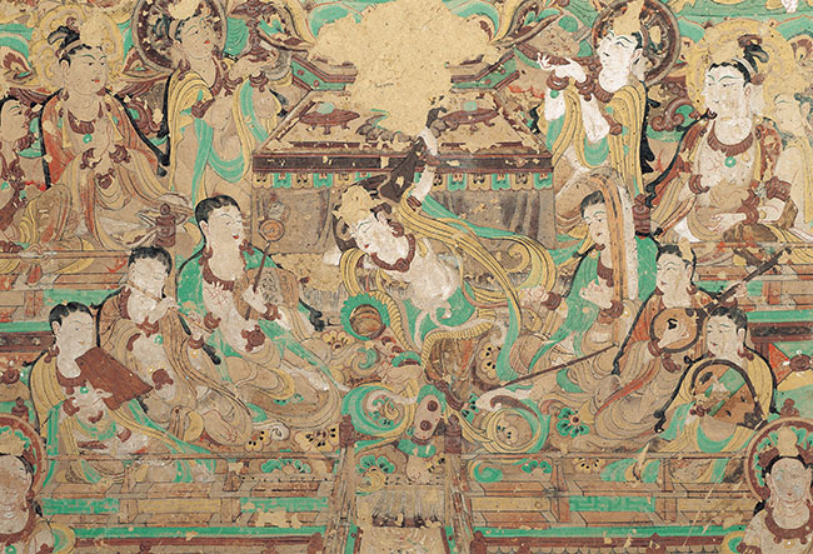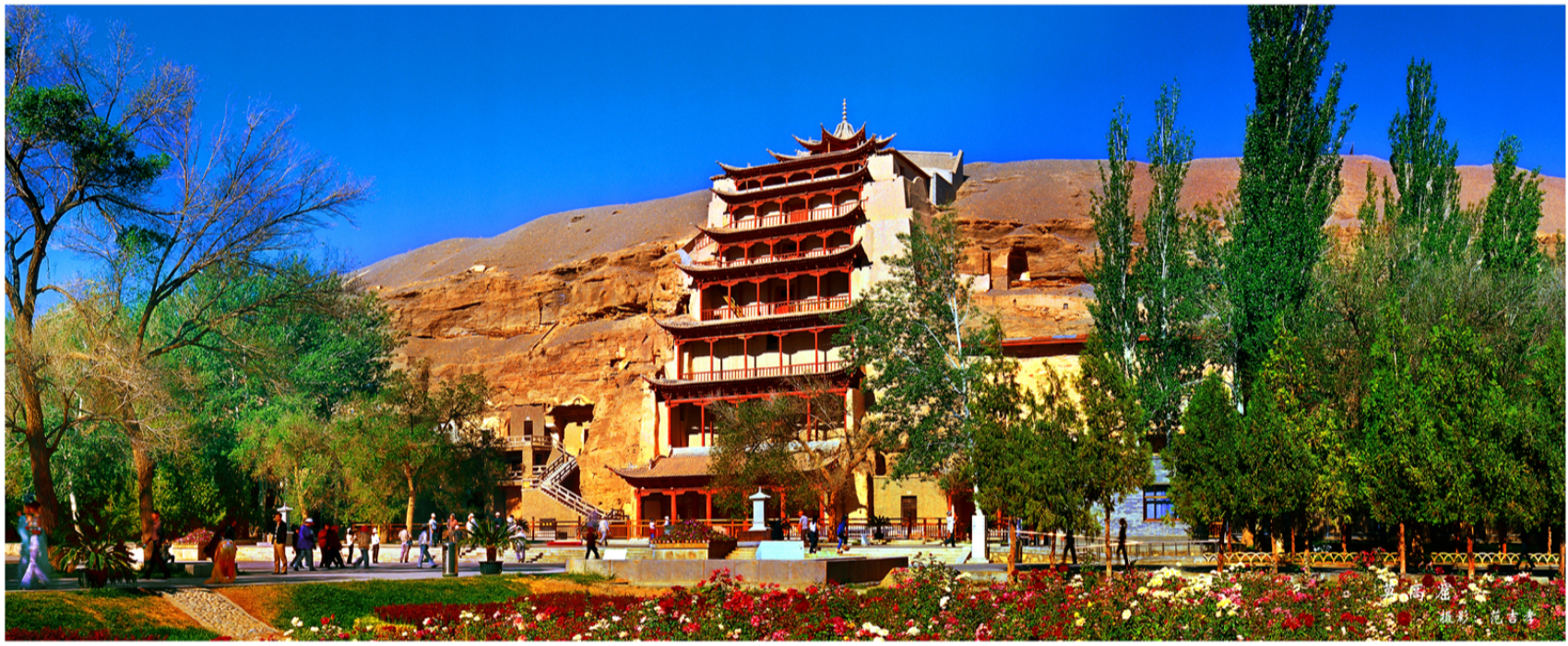Location: 25 km (15.5 miles) from Dunhuang city center, eastern foothills of the Singing Sand Mountains
Mogao Caves Founded: 366 AD during the Five Barbarians and Sixteen Kingdoms period (304–439)
Number of Caves: 735
The Mogao Caves are a sacred site housing treasures of Buddhist art. A network of wooden walkways stretching 1,600 meters (5,249 feet) north-south leads to the caves, which rise up to five stories high, with some reaching 50 meters (164 feet). Incidentally, “Mogao” means “high place in the desert.”
According to Tang Dynasty (618-907) records, a monk from the Sixteen Kingdoms period witnessed the dazzling golden radiance of a thousand Buddhas. Deeply moved, he initiated the construction of grottoes spanning ten dynasties. The Mogao Caves are commonly known as the Thousand Buddha Caves.
Buddhist art originated in India. When encountering difficult rock surfaces, the Mogao sculptors improvised. They placed clay statues in front of the cave walls, carved relief murals as backgrounds, and painted decorative art on the cave walls and ceilings. The largest Buddha statue stands 34.5 meters (113 feet) tall, while the smallest is only 2 centimeters (0.79 inches) high.

Visitors will find traces of Indian Buddhist art in the early works. More recent pieces depict the daily life and activities of local trades and professions. As you explore the 735 caves, you’ll revisit scenes of everyday life and special events captured by the artists. Over the centuries, the artistic quality of these caves fluctuated, reflecting the rise and fall of Buddhism and the availability of patronage. Artists from each dynasty employed their own distinctive color palettes. Visitors can distinguish works from the Tang Dynasty and the Song Dynasty (960–1279).
It is believed that the artworks of the Mogao Caves could fill 25 kilometers (15.5 miles) of gallery space. Beyond the artifacts, the site preserves 50,000 manuscripts written in multiple languages. The Mogao Caves stand as a treasure trove of China’s cultural exchanges with other nations over more than a thousand years.

2. Reservation Process
Daily visitor capacity is limited to 6,000 people, so advance ticket reservations are required—especially during peak tourist season (May 1 to October 31). Visitors can book tickets online via the Mogao Grottoes official website up to 30 days in advance. Unfortunately, the English version of the website is not yet available.
Effective July 20, 2015, individual visitors with reservations must present the valid ID used during booking to collect tickets. Foreign visitors may use their passports. All visitors should collect tickets at either the downtown ticket office (Room 102, Building 15, North District of Yingbin Garden Community, Yangguang East Road, near Yingbin Hotel) or the Digital Exhibition Hall ticket office.
Visitors without pre-booked tickets may purchase them at either of the above ticket offices.
For inquiries, please call (+86) 400-833-3715 (7:00 AM – 12:00 AM).
3. Visitor Notice for July and August
Supplementary tickets will be issued on odd-numbered days in July and even-numbered days in August, priced at 100 RMB. A daily limit of 12,000 supplementary tickets applies. Unlike standard admission tickets, supplementary tickets grant access only to four caves and the museum, excluding the Digital Exhibition Center.


